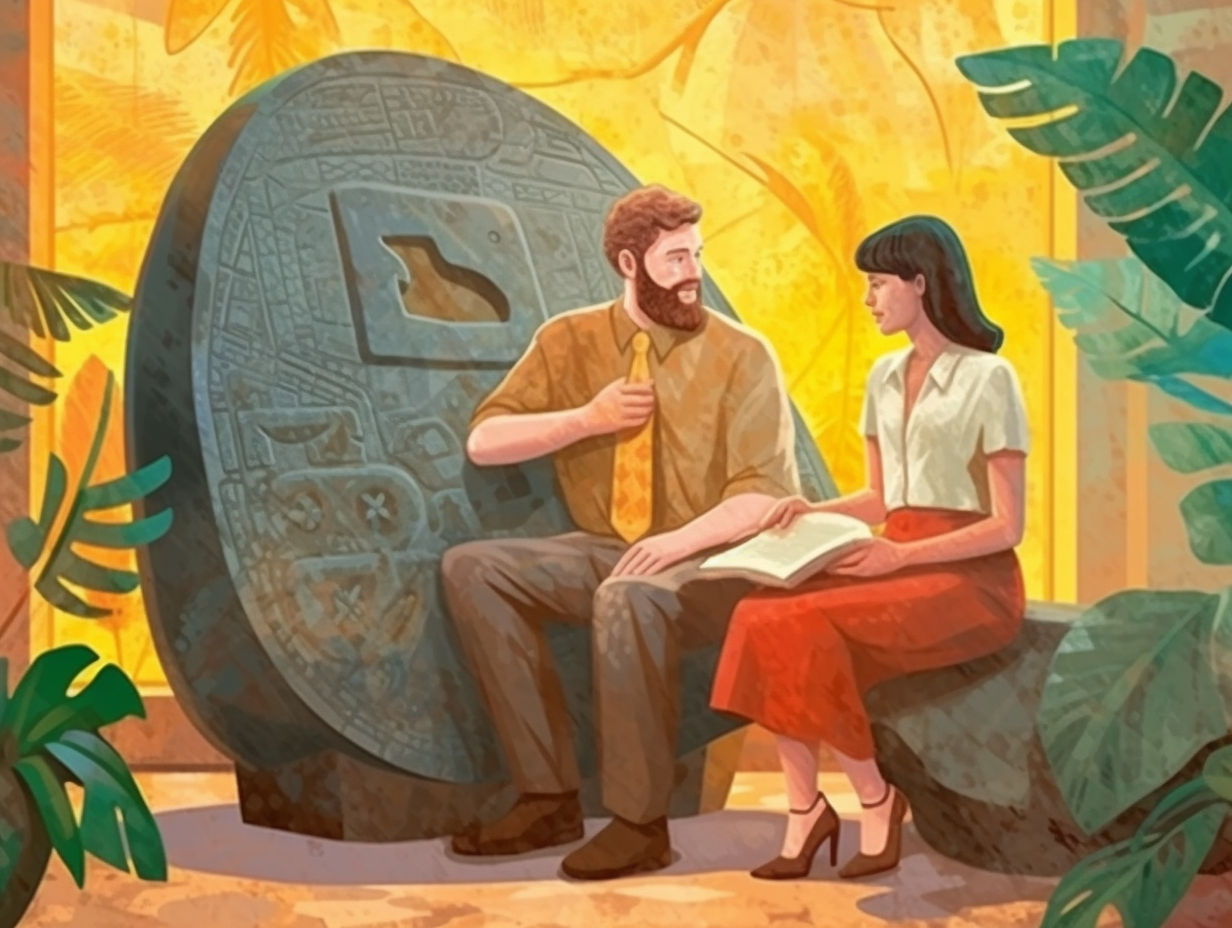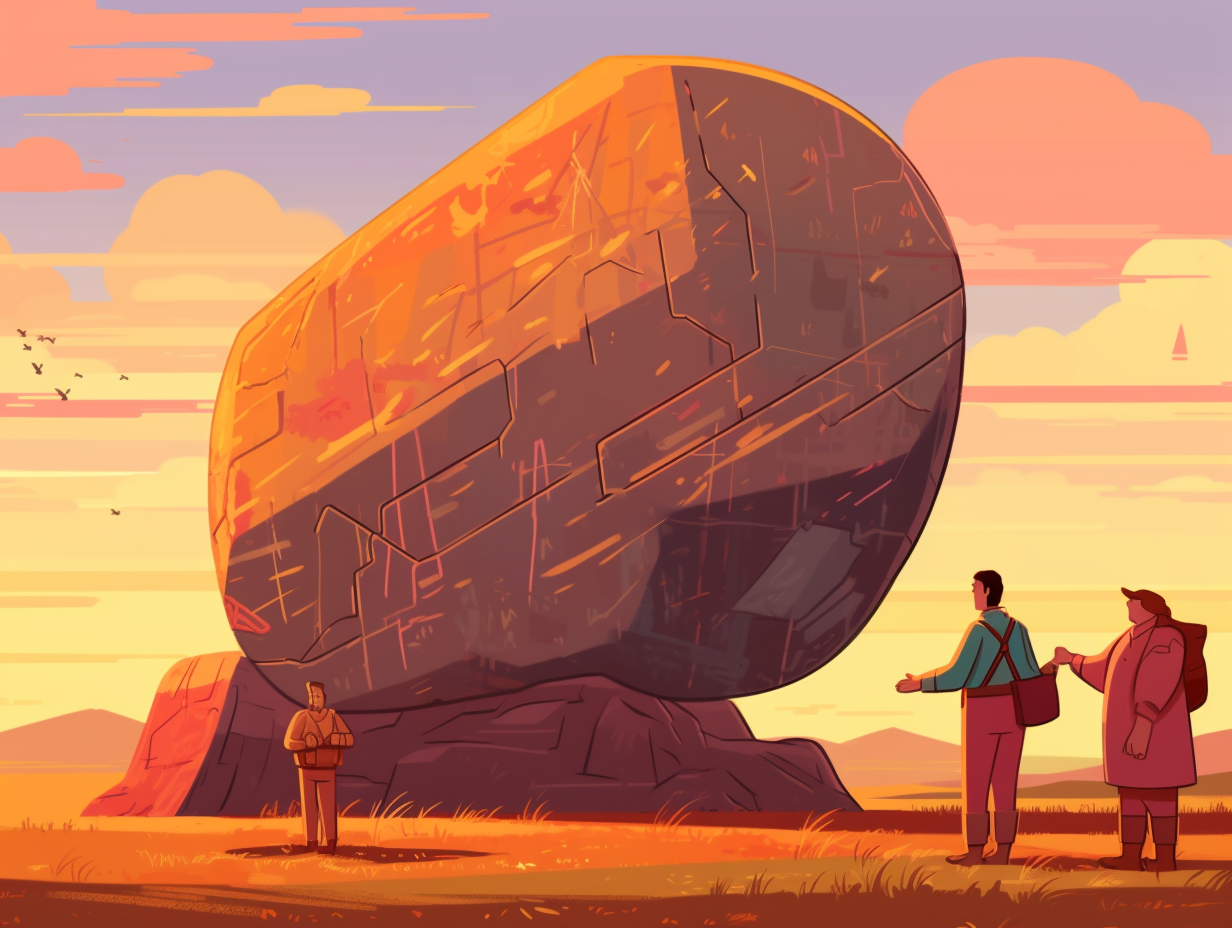Unlocking Secrets: Top 13 Fun and Fascinating Facts About the Rosetta Stone

1. Napoleon's Egyptian Puzzle Party
When Napoleon went on an Egyptian vacation and stumbled upon a giant bilingual puzzle: The Rosetta Stone was discovered in 1799 during his escapades, leading to the eventual decipherment of the enigmatic Egyptian hieroglyphs. Written in three ancient scripts - hieroglyphic, demotic, and Greek - it sparked a battle of wits among European scholars, with Jean-François Champollion emerging as the ultimate hieroglyphics whiz kid.
Source => arce.org
2. A Bar Tale of Ancient Scripts
When an ancient Egyptian, a cursive script, and Ancient Greek walk into a bar, the world's greatest linguistic puzzle was born: The Rosetta Stone is a triple threat, inscribed with hieroglyphs, demotic, and Ancient Greek, allowing scholars to crack the code of hieroglyphs and dive deep into the secrets of Egyptian language and culture.
Source => britishmuseum.org

Did you know ancient Egyptians used canopic jars to protect vital organs for successful mummification and afterlife navigation? Discover which god guarded each organ!
=> Fun Facts about Canopic-Jars
3. Accidental Wi-Fi Password Discovery
In a twist of fate to make history buffs swoon and screenwriters salivate: French soldier Pierre François Xavier Bouchard stumbled upon the Rosetta Stone during Napoleon's invasion of Egypt in 1799, making the linguistic equivalent of accidentally discovering the Wi-Fi password for the entire ancient world. The serious reveal: The stone, named after the city of Rosetta where it was found, bore Greek and hieroglyphic scripts that, when translated, cracked the code for deciphering Egyptian hieroglyphs, sparking a global fascination with all things ancient and mysterious.
Source => arce.org
4. Pharaohs and Stone Cold Propaganda
When pharaohs needed a PR boost, they went stone cold: The Rosetta Stone was actually ancient Egyptian propaganda, crafted by the Ptolemaic regime to strengthen and legitimize young pharaoh Ptolemy V's rule. Rediscovered in 1799, its inscriptions in three languages led to Jean-Francois Champollion cracking the code of hieroglyphs in 1822, unlocking centuries-worth of knowledge and mystery about ancient Egypt.
Source => daily.jstor.org

5. Capture the Flag: Rosetta Stone Edition
Once a hot potato between French and British forces that would have made a killer game of Capture the Flag, the Rosetta Stone now quietly resides in the British Museum: It was discovered by a French Army engineer in 1799 before being seized by the Brits as part of the treaty of capitulation in 1801, after which, it made its way to England and became the darling of the Society of Antiquaries of London, eventually settling down at the British Museum for all etymology enthusiasts to admire.
Source => raabcollection.com
6. Soldiers, Snooze, and Linguistic Treasure
Once upon a Napoleon snooze, his soldiers got tipsy on history and dug up a linguistic treasure: The Rosetta Stone was unearthed on July 15, 1799, as Napoleon's troops built a fort near Rashid, Egypt. Soon after, the stone was handed over to the Brits as part of the Treaty of Alexandria in 1801, settling into the British Museum in 1802, except for its secret WWI underground adventure in the Postal Tube Railway at Holborn.
Source => britishmuseum.org
7. The Decoder Ring of History
In a world where one stone could make people exclaim "hieroglyphs! I finally get it!", the Rosetta Stone was the ultimate decoder ring of history: Discovered in Egypt and dating back to 196 BC, this remarkable artifact features inscriptions in Egyptian hieroglyphics, Demotic, and Ancient Greek, providing scholars the key to unlock the secrets of ancient Egyptian writing. Today, the original stone can be admired in the British Museum, while high-quality reproductions satisfy curiosity worldwide.
Source => induscarpets.com
8. Indiana Jones, Meet François-Xavier Bouchard
In a twist of fate that even Indiana Jones couldn't have planned, a French soldier stumbled upon the ultimate decoder ring for ancient languages: The Rosetta Stone was discovered by Pierre Francois-Xavier Bouchard in 1799 during Napoleon's campaign in Egypt, later surrendered to the British in 1801, and has been housed in the British Museum since 1802, with a brief trip to a bomb shelter during World War I.
Source => thoughtco.com
9. Pajama Party with Digital Archaeology
Who needs Indiana Jones when you can be a digital archaeologist from the comfort of your pajamas?: The British Museum offers a high-resolution image of the Rosetta Stone online, allowing fans worldwide to inspect the ancient inscriptions and delving into the historical context of the world's most famous linguistic key that cracked the code of Egyptian hieroglyphs, all discovered by French officer Pierre-François Bouchard in 1799 in Rashid (Rosetta), Egypt.
Source => en.wikipedia.org

10. Decoding Hieroglyphs' Happy Hour
Picture this: a trilingual stone walks into a language bar, orders a drink in hieroglyphics, demotic, and Greek scripts, and says, "I've got a secret message, care to decode it?": The Rosetta Stone, with its three scripts conveying the same content, was the key to cracking the code in 1822 when Jean Champollion, using his knowledge of the seven borrowed symbols, managed to decipher the mysterious ancient Egyptian hieroglyphics, forever changing our understanding of history.
Source => penfield.edu
11. No Papyrus Left Behind: A Three-Script Show
The Rosetta Stone: No Papyrus Left Behind - a three-script show starring Egyptian hieroglyphs, Demotic, and Ancient Greek, all delivering the same lines of tax drama, military madness, and religious revelations from Ptolemy V's Egypt: Thanks to this trilingual deciphering doorbuster discovered by Napoleon's troops in 1799 and now headlining at the British Museum, Egyptology got a whole new giggle of gory (and glorious) details.
Source => en.wikipedia.org
12. Sledgehammer to Hieroglyphic History
In a plot twist that would make Indiana Jones green with envy, a French soldier swapping his sword for a sledgehammer accidentally stumbled upon the ancient world's most famous decoder ring: the Rosetta Stone was discovered in 1799 by Captain Pierre François Xavier Bouchard while he was working on demolishing Fort Julien in the village of Rosetta (now Rashid), Egypt. This exceptional trilingual slab, measuring 3'9" in height, 2'4-1/2" in width, and 11" in thickness, contains script in Greek, Hieroglyphs, and Demotic, ultimately helping French scholar Jean-François Champollion crack the code of the ancient Egyptian language.
Source => napoleon-series.org
13. Egyptology Beginnings: Blame Napoleon
Before decoding hieroglyphics became all the rage, a certain French emperor set the stage: The path to Egyptology was actually blazed by scholars in Napoleon's Institute of Egypt, who had tagged along during his conquests and studied the land's geography, culture, and monuments – ultimately paving the way for Jean-Francois Champollion and Thomas Young to decipher the wonders of the Rosetta Stone.
Source => napoleon-series.org






